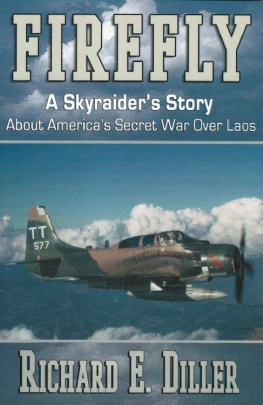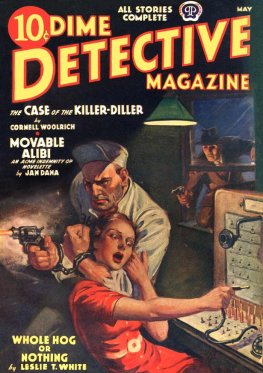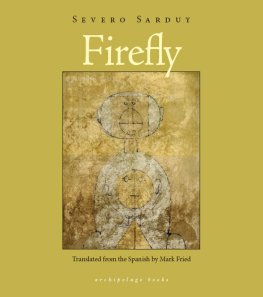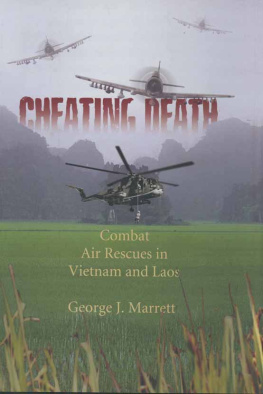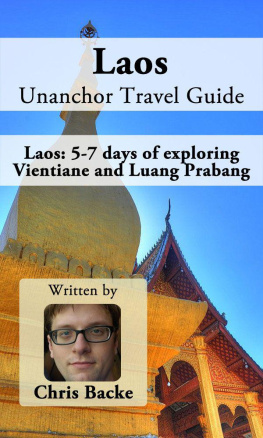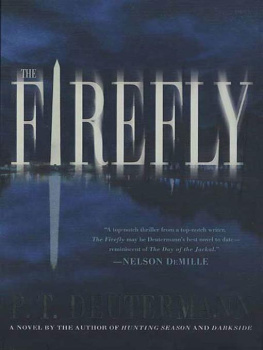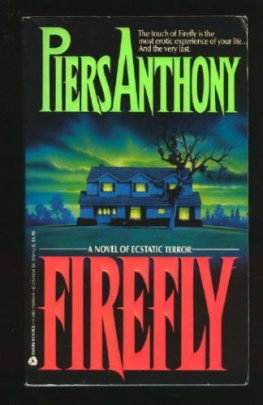Richard Diller - Firefly: A Skyraiders Story About Americas Secret War Over Laos
Here you can read online Richard Diller - Firefly: A Skyraiders Story About Americas Secret War Over Laos full text of the book (entire story) in english for free. Download pdf and epub, get meaning, cover and reviews about this ebook. year: 2020, publisher: Dog Ear Publishing, genre: Non-fiction. Description of the work, (preface) as well as reviews are available. Best literature library LitArk.com created for fans of good reading and offers a wide selection of genres:
Romance novel
Science fiction
Adventure
Detective
Science
History
Home and family
Prose
Art
Politics
Computer
Non-fiction
Religion
Business
Children
Humor
Choose a favorite category and find really read worthwhile books. Enjoy immersion in the world of imagination, feel the emotions of the characters or learn something new for yourself, make an fascinating discovery.
- Book:Firefly: A Skyraiders Story About Americas Secret War Over Laos
- Author:
- Publisher:Dog Ear Publishing
- Genre:
- Year:2020
- Rating:4 / 5
- Favourites:Add to favourites
- Your mark:
- 80
- 1
- 2
- 3
- 4
- 5
Firefly: A Skyraiders Story About Americas Secret War Over Laos: summary, description and annotation
We offer to read an annotation, description, summary or preface (depends on what the author of the book "Firefly: A Skyraiders Story About Americas Secret War Over Laos" wrote himself). If you haven't found the necessary information about the book — write in the comments, we will try to find it.
Richard Diller: author's other books
Who wrote Firefly: A Skyraiders Story About Americas Secret War Over Laos? Find out the surname, the name of the author of the book and a list of all author's works by series.
Firefly: A Skyraiders Story About Americas Secret War Over Laos — read online for free the complete book (whole text) full work
Below is the text of the book, divided by pages. System saving the place of the last page read, allows you to conveniently read the book "Firefly: A Skyraiders Story About Americas Secret War Over Laos" online for free, without having to search again every time where you left off. Put a bookmark, and you can go to the page where you finished reading at any time.
Font size:
Interval:
Bookmark:

2013 Richard E. Diller
All Rights Reserved.
No part of this publication may be reproduced, stored in a retrieval system, or transmitted, in any form or by any means, electronic, mechanical, photocopying, recording, or otherwise, without the written permission of the author.
To the families
of the men
who were killed
or missing in action
while flying
A-1 Skyraiders
during the war in
Southeast Asia
Attack. It designated that realm devoted to the obliteration of enemies on the ground. An attack pilot was a bomber. And a rocketeer. And a strafer. Attack pilots were the mud-fighters, the guys who flew down in the weeds and delivered fire on the heads of the enemy. And who took fire in return.
Being an attack pilot had always implied a certain expendability. Losses were expected. It was like walking into a barroom brawl: you always hoped to land a lucky first punch and take the guy out, but you knew youd probably take a few hits yourself. Thats just the way it had always been for attack pilots.
Robert Gandt, Bogeys and Bandits, Viking Press, 123.
Chapter
During the time of the Vietnam War, the neighboring country of Laos was a battleground of two wars: one was in northern Laos between Hmong people who were being supported by clandestine American forces against the Pathet Lao, and the other was the effort to interdict the traffic of southbound supplies along the Ho Chi Minh Trail in southern Laos. Those supplies were for support of North Vietnamese Army (NVA) activities in South Vietnam. By early 1969, the battle pattern was well established.
This book is about a part of those wars, especially the night mission over northern Laos and the Ho Chi Minh Trail and how it was conducted by A-1 Skyraider pilots in coordination with forward air controllers (facs). To my knowledge, no one has written about the night mission over Laos until now.
The main reason propeller-driven A-1s were still being used in the jet age was because of their usefulness in recovering aircrew members who had been shot down over Vietnam and Laos. Skyraiders could stay over the target (or survivor) for an extended time, they had three communication radios (UHF, VHF, and FM), they could carry a lot of ordnance and deliver it accurately (especially from low level), and they could take a lot of punishment.
While the sun was up, O-1 Bird Dog pilots with the call sign Raven flew out of Lima Site 98, the secret CIA base in northern Laos (called Barrel Roll) and provided faccing service for the friendlies and high performance fast mover jets. But the Ravens didnt fly at night, which meant the Barrel Roll night mission was left to Skyraiders.
In daylight, A-1s were too slow and vulnerable to the many guns used by the enemy along the Trail (southern Laos was known as Steel Tiger), so the only times they were allowed to enter the area was at night or when an airplane was shot down and a survivor was in need of rescue.
The 609th Special Operations Squadron, which flew A-26s and had the call sign Nimrod, covered nights in Steel Tiger until it was phased out in November of 1969. At that time A-1s picked up the night Trail mission in addition to going north. Because of that, for approximately the first half of my tour I flew nights only over northern Laos. Later I flew over the Trail as well. The enemy had big guns in northern Laos, but the main hazard was high terrainmountains, as well as the gunsand in the south the hazard was ground fire.
Although the search and rescue mission was the main reason low and slow A-1s were still being used in the jet age, I specializedby choicein night missions. Therefore, that is what this book is mostly about. However, I do cover one SAR written from my perspectivethat being Boxer 22.
Americas wartime involvement in Laos was not acknowledged by the United States government until 1997. Pilots were advised not to talk in our letters home of where we were flying. The location of awards earned as a result of heroics was listed as Southeast Asia, not Laos or Vietnam. Because of this, A-1 pilots perceived a lack of recognition and credit for our efforts, which was an ongoing irritation.
The events related here are recalled from my flight log and audiotapes I sent to my parents over the course of the year. Many times I picked up the recorder just after returning from a mission, so the recall is very fresh in many cases. None of this is fiction.
Names have not been changed except in a couple of places when I tell about people doing stupid things. In those instances, I changed names to protect the guilty.
This book is about many things, including how weather affected operations and how pilots lived their lives in a combat environment.
I hope you enjoy it.
Sincerely,
Dick Diller
Several people have contributed to this book, and without their efforts the story would be lacking important information. No one A-1 pilot experienced it all, and the contributions of others add depth to the story.
Jim George told stories only he can tell.
Jack Hudson told of several experiences that shouldnt be lost because no one recorded them.
Don Combs contributed the details of his shoot-down and recovery.
Fighter pilots George Marrett and Mike McCarthy and navy helicopter pilot Tom Phillips are authors who advised and encouraged me to continue this to completion.
The anonymous A-1 pilot who added his point of view of Boxer 22 and Christmas deserves recognition.
Thank you to Robert Gandt for the use of his words about attack pilots.
Im not the one who invented this saying, but if my grandchildren ever ask me if I was a war hero, my answer will be, No, but I flew with a lot of guys who were. That will be a reference to Jim, Jack, Don, Jim Monk, Jon Ewing, and many others with whom I flew. I learned a lot from them, especially humility.
Thanks to Emily for always being there for me, and for her contributions to the story. Thanks to my son Chris for maps, daughter Cori for ongoing never-ending help with the technical part of computers, and daughter Angie for her work right after graduating from the University of Iowa.
I also want to recognize Nancy Payne-Olewiler, who edited my work and kept me from embarrassing myself by straightening out literary missteps. Nancy was a valuable sounding board who made me defend passages and justify why I said certain things the way I did.


From April, 1969, until March, 1970, I flew A-1 Skyraiders as a United States Air Force pilot from Nakhon Phanom Royal Thai Air Force Base, Thailand, on missions over Laos. Nakhon Phanom was commonly called NKP and sometimes was known as Naked Phanny. The base is near the Mekong River about 300 miles northeast of Bangkok.
Many Skyraider pilots came directly from pilot training, but most, like me, came from other flying squadrons in the air force and so had varying experience levels. We ranged in age from about twenty-four years to somewhere around forty, with a few commanders and more senior people a little older. In the late 1950s, the air force instituted a requirement that all new officers have a college degree. So as a group, my fellow pilots were well educated. Some had graduate degrees.
Next pageFont size:
Interval:
Bookmark:
Similar books «Firefly: A Skyraiders Story About Americas Secret War Over Laos»
Look at similar books to Firefly: A Skyraiders Story About Americas Secret War Over Laos. We have selected literature similar in name and meaning in the hope of providing readers with more options to find new, interesting, not yet read works.
Discussion, reviews of the book Firefly: A Skyraiders Story About Americas Secret War Over Laos and just readers' own opinions. Leave your comments, write what you think about the work, its meaning or the main characters. Specify what exactly you liked and what you didn't like, and why you think so.

